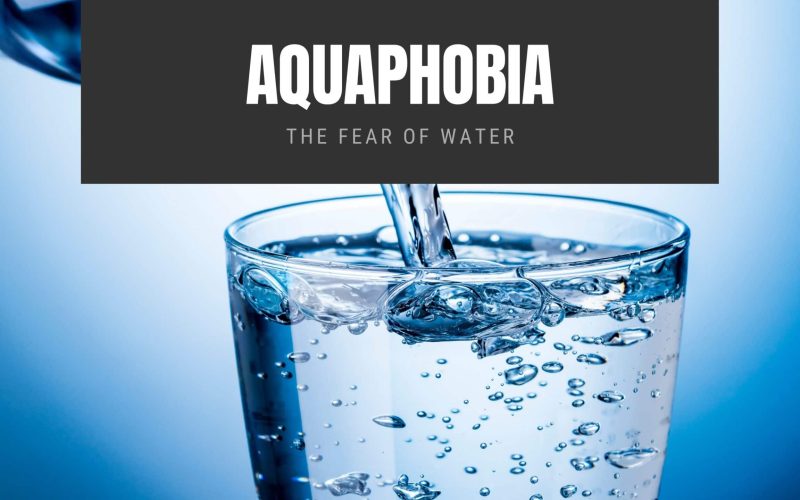Water is the most basic necessity for survival on earth, yet most of us have some level of fear when it comes to making contact with water.
We typically try to overcome those fears or learn the best coping methods. However, if you have aquaphobia, which is the fear of water, you live with a constant and abnormal level of anxiety and fear that prevents you from going close to water or using it when sometimes.
Aquaphobia is categorized as a specific phobia. It is an irrational fear of something specific that doesn’t necessarily cause much danger.
A person may have aquaphobia if they discover that any source of water triggers an alarming amount of anxiety. This can include a lake, a swimming pool, an ocean, or a bathtub.
People commonly mistake Aquaphobia for a different type of phobia known as hydrophobia. Even though both phobias involve water, hydrophobic, and aquaphobia are different.
Hydrophobia is a deliberate aversion to water that humans develop in the later stages of rabies.
According to the National Institute of Mental Health, it has been estimated that about 19.2 million adults are affected by specific phobias in the United States. It has also been discovered that women are twice as likely to develop them than men.
Many grown-ups who deal with any specific phobia, like aquaphobia, start to develop symptoms that are connected to their fear in adolescence or the early stages of childhood.
What Are the Symptoms of Aquaphobia?
There are many symptoms of aquaphobia, and they are mostly triggered by seeing water.
This intense fear and anxiety in people with aquaphobia could be triggered by a minimal amount of water, like what is in a bowl, the bathroom sink, or even a large body of water, such as the ocean.
The focus here is that the amount of water isn’t the exact cause of the phobia. It is the presence of the water itself that triggers the fear and resulting anxiety.
Some of the most common symptoms of aquaphobia are:
- A sudden feeling of intense anxiety, fear, and panic at the thought of water
- An excessive, persistent, or unreasonable fear when in contact with or exposed to water
- Knowing that the fear of water is unnecessary or out of proportion to the real threat
- Tight chest and difficulty breathing
- Avoidance of water
- Sweating
- Dizziness or fainting
- Rapid heartbeat
- Nausea
What Causes Aquaphobia?
There is still no understanding of the causes of any specific phobias. However, there’s some proof that many phobias can be genetically inherited.
Meaning that if a person has a family member who is dealing with a mental health condition, such as anxiety or any other phobias, there may be a high chance of developing a phobia.
Aquaphobia is mostly caused by a traumatic event that occurred during childhood, such as almost drowning.
Aquaphobia may also be the outcome of several negative experiences. Such typically occurs during childhood and is usually not as severe as a traumatic experience.
The Mayo Clinic has also suggested that specific changes in brain function may play a vital role in developing specific phobias.
How is Aquaphobia Diagnosed?
There is no lab test dedicated to testing for aquaphobia. That is why doctors use the recent edition of the Diagnostic and Statistical Manual of Mental Disorders (DSM-5) to guide them through the diagnosis of mental health conditions.
At present, the DSM-5 does not have any specific diagnosis or a category for aquaphobia. Instead, it identifies a deep fear of water under the diagnosis of a specific phobia.
If you suspect your child or yourself have aquaphobia, book an appointment with your doctor.
He or she will be able to refer you to a psychiatrist or a mental health specialist who can correctly diagnose and treat your phobia.
Based on the standard from the DSM-5, a psychologist or mental health specialist will most likely diagnose aquaphobia (or any other specific phobia) if you have experienced any of the above symptoms for at least six months.
A part of the diagnosis also requires ruling out other mental health conditions, such as:
- Obsessive-compulsive disorder
- Post-traumatic stress disorder
- Panic disorder
How to Treat Aquaphobia?
Since aquaphobia is a specific phobia, it is most commonly treated with either one of two or both forms of psychotherapy: cognitive behavioral therapy and exposure therapy.
The preferred treatment method is exposure therapy. During this type of treatment, you’ll be repeatedly exposed to the source of the phobia — in this case, water.
As you’re exposed to water, your therapist will keep track of your reactions, thoughts, feelings, and sensations to help you manage your anxiety.
With cognitive behavioral therapy, you will be taught to challenge your thoughts and beliefs about the fear of water you are dealing with.
As you learn to challenge your fears, you will also learn strategies to help you cope better with the thought patterns and beliefs associated with your phobia.
In addition to the option of professional treatment, there are also many self-care techniques that you can practice at home.
You can try mindfulness-based strategies, yoga, daily physical activity, and deep breathing as helpful strategies for treating phobias.
In the final stages of treatment, you may work closely with a professional swim instructor who can train you in swimming and spending time in the water more comfortably.
Though there is no medicine dedicated to the treatment of aquaphobia or any other phobia, your doctor might prescribe some medications to help control some symptoms of panic and anxiety.
However, the Mayo Clinic has also noted that these medications are not for long-term use.
Rather, medications can help during the initial treatment phase and for specific reasons.








